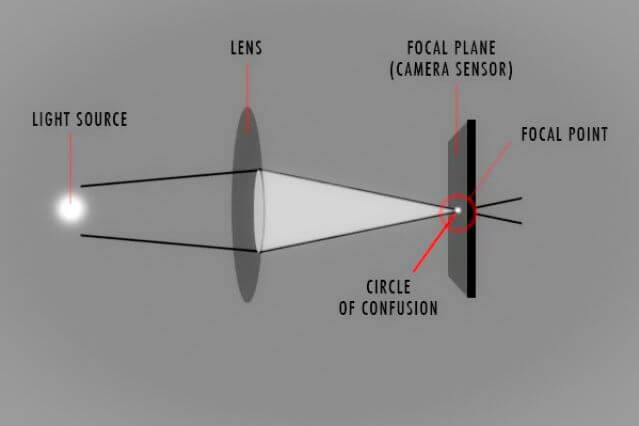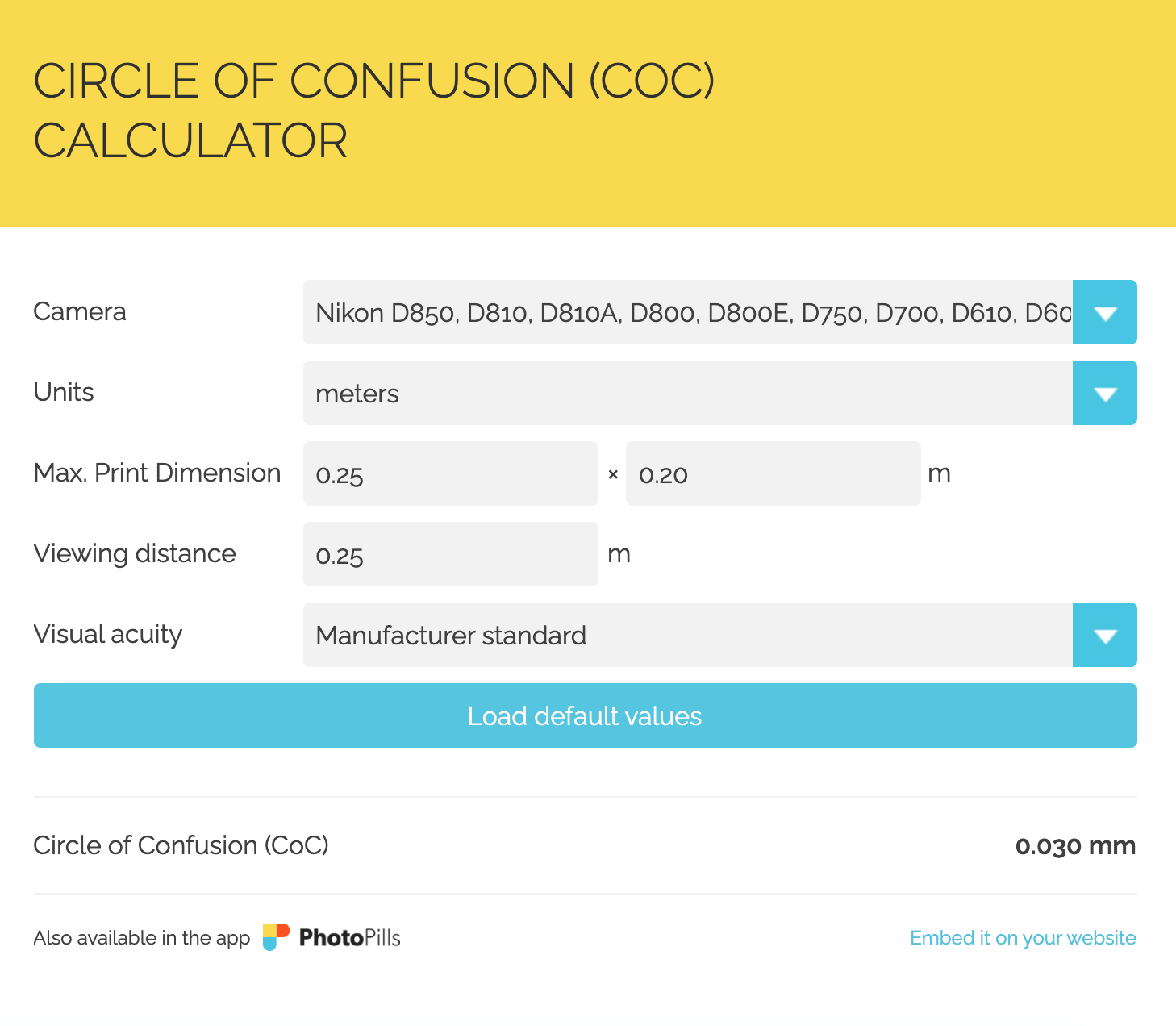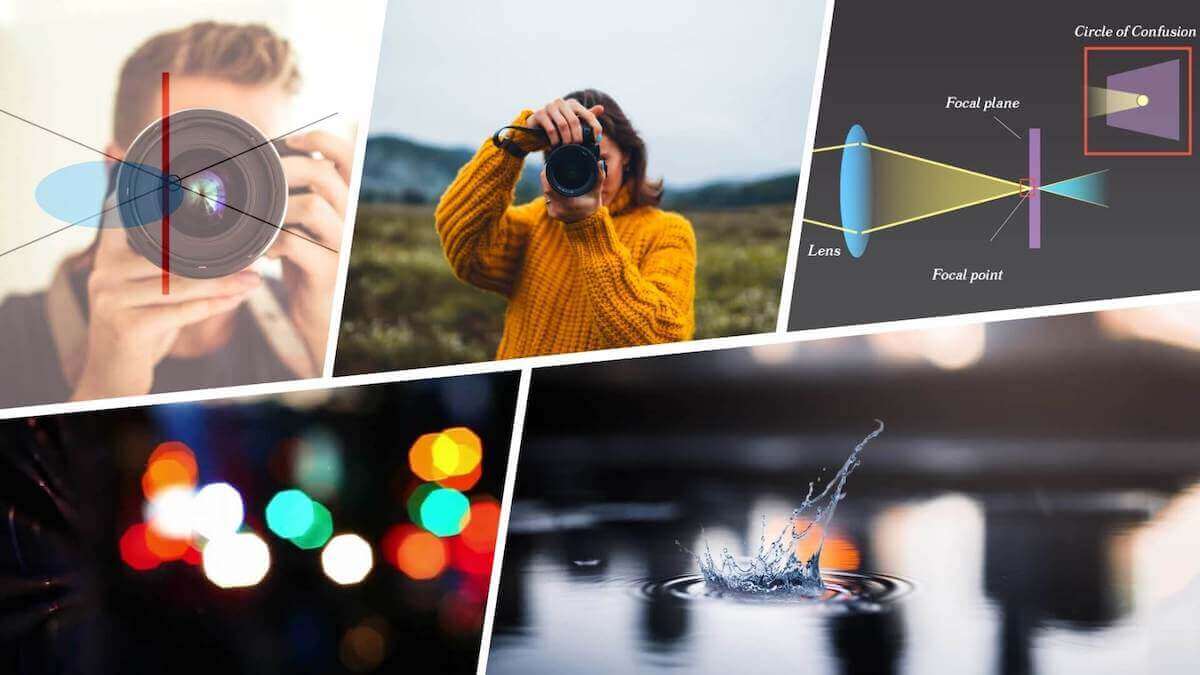How do you ensure your photos are sharp and in focus? Getting comfortable with the circle of confusion is a good first step. What is circle of confusion? This concept is an under-defined, yet super critical idea in photography. And understanding it will help you see how everything works together. The circle of confusion is related to how we understand focus and sharpness, but let’s get a bit more technical. After all, the more you know, the more intentional you can be with every shot.
What is circle of confusion
First, let’s talk about focus
Before we get into the definition of the circle of confusion, let’s break down how a camera focuses.
I know it’s basic, but this is everything when defining the concept.
To start, let’s look at our cameras…
We know our lenses have various lens elements within them. These each play their own role. The focus element is what we’re concerned with here.
When light from the outside world comes into our camera and passes through the lens, that same light is bent to a matching point behind the lens. The point where this light crosses each other, or this point of convergence, as seen below, is the focal point.

Focus and the circle of confusion
When this focal point is on the focal plane (your camera’s sensor or film), it makes a super small dot or circle on the plane where your subject will be in sharp focus.
But when we go to focus our lens, the focus element moves our focal point. So when the focal point moves away from the focal plane, the circle gets bigger, and your subject gets blurrier.
So now, let’s look at the circle of confusion definition.
Circle of Confusion Definition
What is the circle of confusion?
The circle of confusion is the measurement of where a point of light grows to a circle you can see in the final image. Also called the zone of confusion, it’s measured in fractions of a millimeter. The circle of confusion is what defines what’s in or out of focus. This number is also what calculates depth of field. The circle’s size is what affects the sharpness of an image. The smaller the circle, the sharper the image. And the larger the circle, the blurrier. It is often written as CoC.
Circle of confusion is concerned with:
- How our cameras focus light
- How sharp our image is & its depth of field
- How a viewer perceives an image
What is circle of confusion
What creates the circle of confusion?
To truly understand a technical concept like the zone of confusion, visuals are necessary. Below is a short but incredibly helpful video that provides a 3D diagram simplifying this concept.
What is circle of confusion
To recap, the circle of confusion is the measurement of where a point of light grows to a circle that can see in a final image. If you have a camera, you can experience this concept by racking your lens' focus ring and seeing how a light source becomes out of focus.
As you change the focus of your lens, the point at which light comes to convergence changes as well. This causes the zone of confusion to grow.
Let’s take a look at another visual explanation to better understand this concept. The next video will go over it a bit differently while also providing a visual for how the circle of confusion affects depth of field. This animation is particularly helpful to get a clearer understanding of the concept.
What is circle of confusion and depth of field
The zone of confusion and the sharpness of an image may sound subjective, but it is actually calculated. Photopills circle of confusion calculator is a great resource for calculating your camera's CoC and understanding how to achieve the sharpness or depth of field you desire.

Circle of confusion calculator
So what does the circle of confusion have to do with photography and cinematography? How does it affect our final image? The answer can be simply summed up into one term — depth of field.
Related Posts
What is circle of confusion
Effects of the circle of confusion
As mentioned above, the circle of confusion is what calculates the depth of field. Depth of field is probably one of the most critical concepts in photography, way ahead of the circle of confusion.
Depth of field (DOF) is the term used to describe the size of the area in your image where objects appear acceptably sharp. The area in question is known as the field, and the size (in z-space) of that area is the depth of that field. DOF is governed by the angle at which light rays enter the lens.
The circle of confusion is the standard criteria for this sharpness. How does depth of field and the circle of confusion affect an image? Let’s take a look at the video breakdown below to see how photographers and filmmakers utilize this technique to achieve specific effects.
What is circle of confusion- Depth of Field Explained • Subscribe on YouTube
CoC is a function of viewing distance, enlargement, and your own visual acuity.
Say you have an image. You look at it at close range. The closer you are to it, the blurrier it will appear (or have a shallow depth of field) compared to if you stand quite a distance back.
When you do that, the points of light that appeared blurry initially, might look sharper from farther away (or have a deep depth of field).
Enlargement works similarly. If you enlarge an image, you’ll see the photo at closer range, and will have a shallower depth of field, compared to a reproduced image that is much smaller. Of course, depending on your personal eyesight, it will depend on how you see the image.
To go deeper into how you can use this technical knowledge out in the field. Take a look at the next article.
UP NEXT
Bokeh explained with creative examples
Now let’s take this one step further. Close the book and get out into the world. When you’re familiar with CoC and depth of field, start creating with it by messing with it! Learning how to create beautiful bokeh is up next.
Up Next: What's Bokeh? →
Share your vision with elegant shot lists and storyboards.
Create robust and customizable shot lists. Upload images to make storyboards and slideshows.
